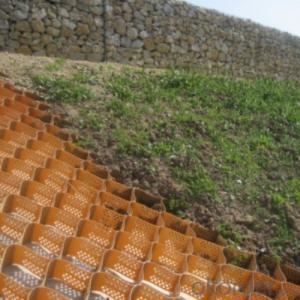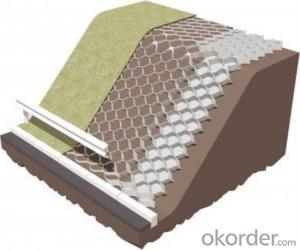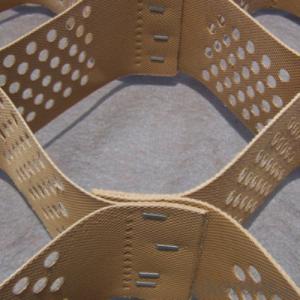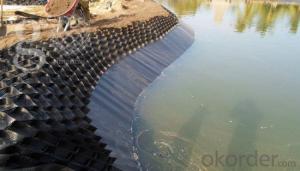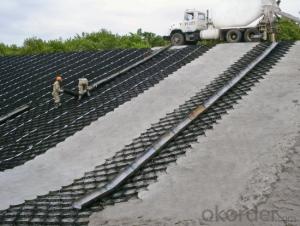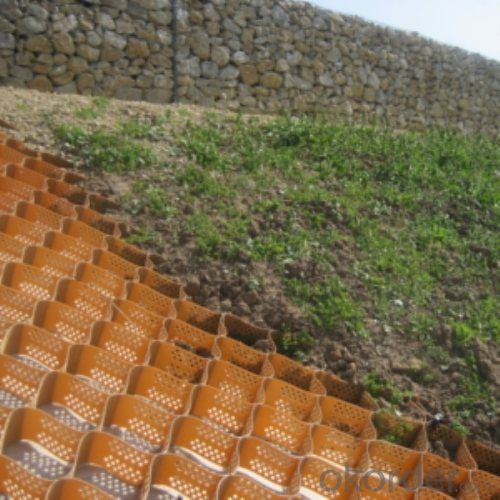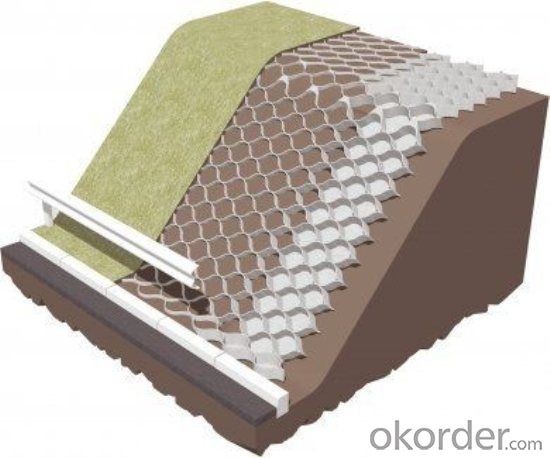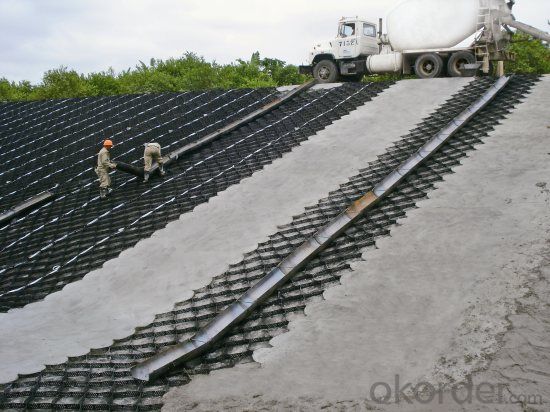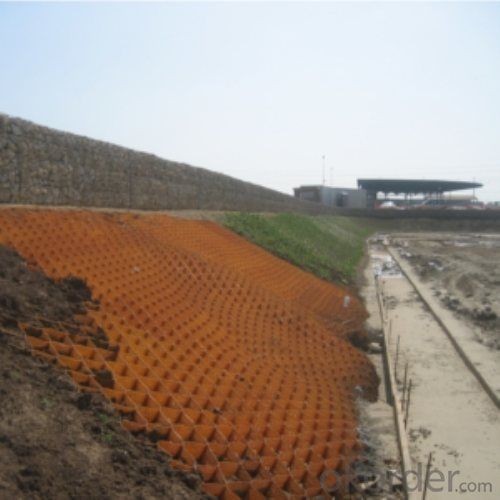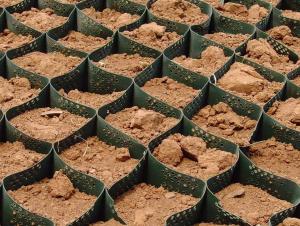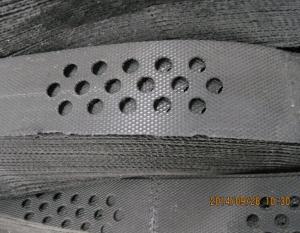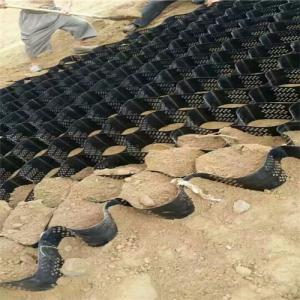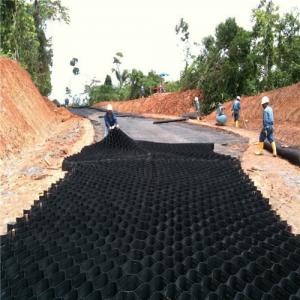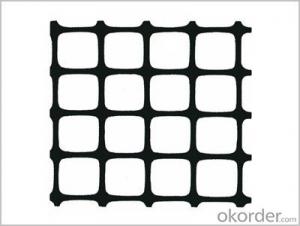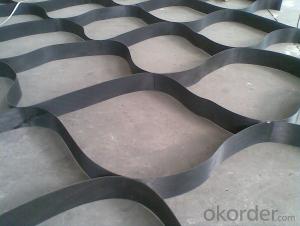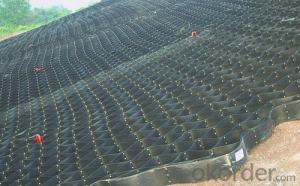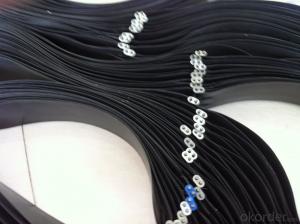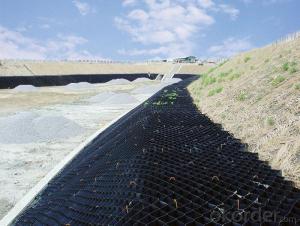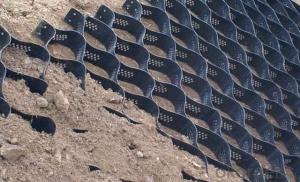Geocell of Enhanced for Architectural Engineering
- Loading Port:
- Qingdao
- Payment Terms:
- TT or LC
- Min Order Qty:
- 10000 m²
- Supply Capability:
- 500000 m²/month
OKorder Service Pledge
OKorder Financial Service
You Might Also Like
Geocell of Enhanced for Architectural Engineering
Description Of Geocell of Enhanced for Architectural Engineering
Geocell is three-dimensional network structure, which is made up of HDPE sheet material
Main Features of Geocell of Enhanced for Architectural Engineering
1, with retractile, transportation can be shrunk and stacked, the construction can be a Lacheng mesh, fill in the dirt, gravel, concrete and other loose material, with strong lateral restrictions and the stiffness of the structure.
2, light material, abrasion resistance, stable chemical properties, photooxidation aging, acid and alkali, applicable to different soil and desert soil conditions.
Applications of Geocell of Enhanced for Architectural Engineering
1, for the stability of highway, railway roadbed.
2, used to bear the weight of the embankment and shallow water treatment.
3, used to prevent the landslide and the load of the gravity of the hybrid retaining wall.
IMages of Geocell of Enhanced for Architectural Engineering
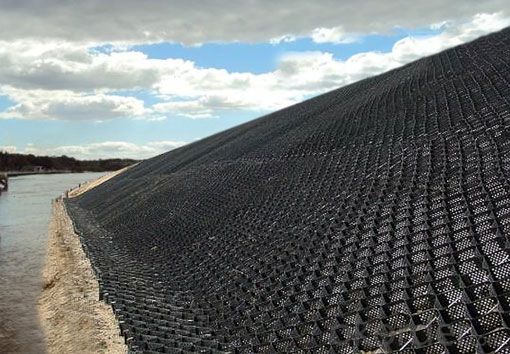
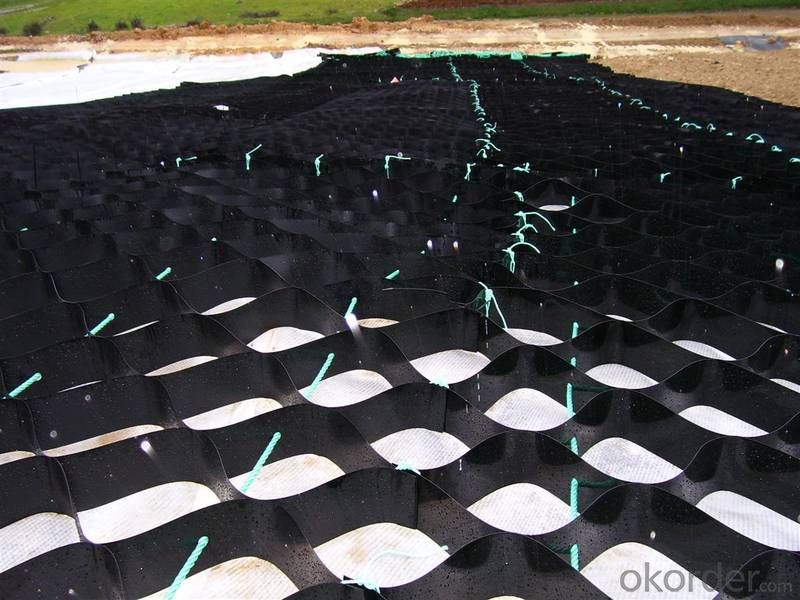
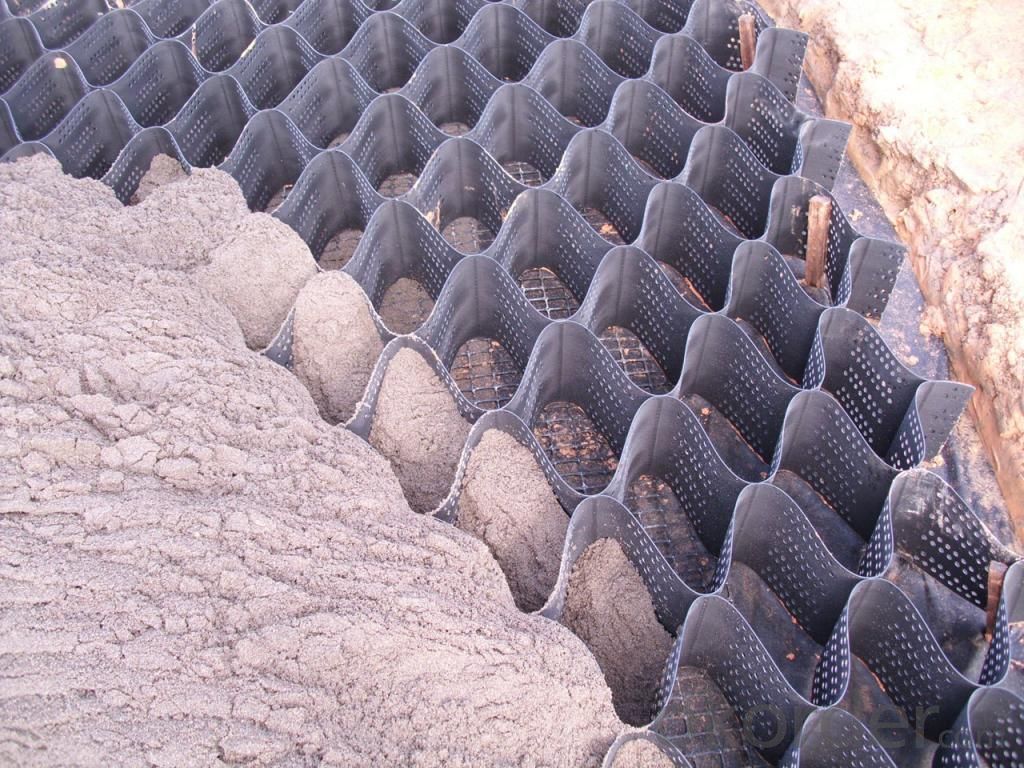
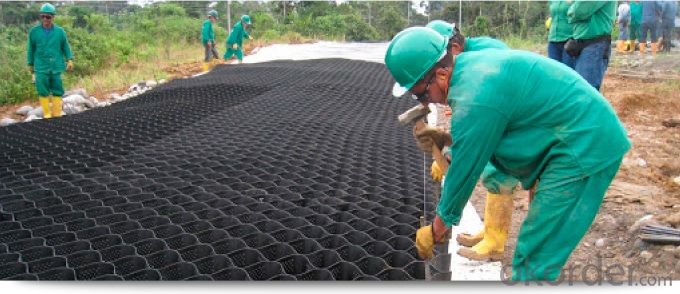
FAQ:
1. What are we supplying?
We are specialized in producing .geotextile , geocell, geogrid
2. How Many years experience do we have?
We have been exported to more than 15 countries in the past 10 years.
3. How long do we usually reply your request?
We always reply our customer within 12 hours.
- Q: Can geocells be used for slope stabilization in mining areas?
- Yes, geocells can be used for slope stabilization in mining areas. Geocells are three-dimensional cellular confinement systems that can be filled with granular materials to form a stable structure. They provide erosion control, slope stability, and soil reinforcement, making them suitable for stabilizing slopes in mining areas where stability is crucial.
- Q: What are the benefits of using geocells?
- Geocells offer numerous benefits for various applications. Firstly, they provide soil stabilization, preventing erosion and improving the load-bearing capacity of weak soils. Secondly, they promote vegetation growth by retaining water and nutrients, leading to greener landscapes. Additionally, geocells are cost-effective as they require fewer materials and labor compared to traditional construction methods. They are also easy to install, saving time and effort. Furthermore, geocells are environmentally friendly as they can be made from recycled materials. Overall, the use of geocells provides solutions for soil reinforcement, erosion control, and sustainable development.
- Q: Can geocells be used in extreme weather conditions?
- Yes, geocells can be used in extreme weather conditions. Geocells are made from high-strength materials that are capable of withstanding harsh weather conditions such as extreme heat, cold, and heavy rainfall. They provide excellent stability, erosion control, and load-bearing capacity, making them suitable for use in a variety of extreme weather environments.
- Q: Are geocells resistant to punctures and tears?
- Yes, geocells are designed to be highly resistant to punctures and tears. They are typically made from high-strength materials such as HDPE (High-Density Polyethylene) or PVC (Polyvinyl Chloride), which provide excellent durability and resistance to damage. This makes geocells ideal for various applications, including soil stabilization, erosion control, and pavement reinforcement, as they can withstand heavy loads and harsh environmental conditions without puncturing or tearing easily.
- Q: Can geocells be used in road construction?
- Yes, geocells can be used in road construction. Geocells are three-dimensional cellular confinement systems made from high-density polyethylene (HDPE) material. They provide reinforcement and stability to the soil, preventing lateral movement and increasing load-bearing capacity. Geocells are often used in road construction to improve subgrade soils, reinforce embankments, control erosion, and stabilize slopes. They are a cost-effective and sustainable solution for enhancing the performance and longevity of roads.
- Q: Can geocells be used in railway track stabilization?
- Yes, geocells can be used in railway track stabilization. Geocells are three-dimensional honeycomb-like structures made of high-density polyethylene (HDPE) that can be filled with various materials like soil, aggregate, or concrete. They provide a stable and load-bearing foundation, preventing lateral movement and erosion of the track. Geocells also enhance the overall performance of the railway track by improving drainage and reducing maintenance needs.
- Q: Are geocells suitable for wastewater treatment plants?
- Yes, geocells can be suitable for wastewater treatment plants. Geocells provide a reliable and cost-effective solution for constructing retaining walls, erosion control measures, and containment systems in wastewater treatment plants. The geocells help to stabilize the soil, prevent erosion, and provide a strong and durable base for various structures and containment units. Additionally, geocells can be easily installed and require minimal maintenance, making them an attractive option for wastewater treatment plants.
- Q: Can geocells be used for beach nourishment?
- Yes, geocells can be used for beach nourishment. Geocells are a type of cellular confinement system that can be filled with sand or other materials to create a stable structure. By placing geocells along the beach, they can help trap and retain sand, preventing erosion and promoting beach growth.
- Q: How do geocells reduce vertical settlement?
- Geocells reduce vertical settlement by providing confinement and lateral support to the soil, preventing it from spreading out and settling. The cells create a cellular structure that distributes the load more evenly, reducing the pressure on the soil and minimizing settlement.
- Q: What is the maximum temperature that geocells can withstand?
- Geocells can withstand maximum temperatures ranging from 60 to 80 degrees Celsius, depending on the specific type and material composition of the geocell.
Send your message to us
Geocell of Enhanced for Architectural Engineering
- Loading Port:
- Qingdao
- Payment Terms:
- TT or LC
- Min Order Qty:
- 10000 m²
- Supply Capability:
- 500000 m²/month
OKorder Service Pledge
OKorder Financial Service
Similar products
Hot products
Hot Searches
Related keywords
